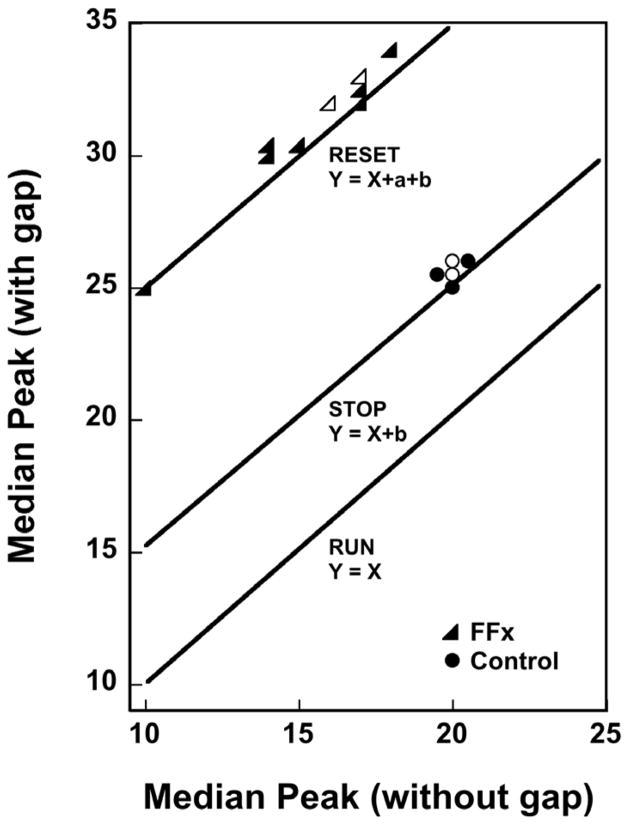Figure 1.
The effect of a 5-s gap inserted during the white-noise signal for fimbria-fornix (FFx) lesioned and control rats performing in a 20-s PI procedure. The gap affected the control and FFx rats differently. The control rats typically responded about 5 s later on trials with a 5-s gap than without a gap (i.e., they stopped timing during the gap); the FFx rats responded about 15 s later on trials with a 5-s gap than without a gap (i.e., they reset timing during the gap). Open triangles represent multiple FFx rats (n=12) and open circles represent multiple control rats (n=8). The peak time on trials with gaps for rats with FFx lesions is approximated by a line Y = X + a + b, where X is the peak time without a gap, a is the duration of the signal before the gap, and b is the duration of the gap. In contrast, the peak time on trials with gaps for control rats is approximated by a line Y = X + b. The three diagonal lines show what would occur if subjects operated their clocks using the run, stop, or reset modes during the gap. Adapted from Meck, Church, and Olton (1984).

